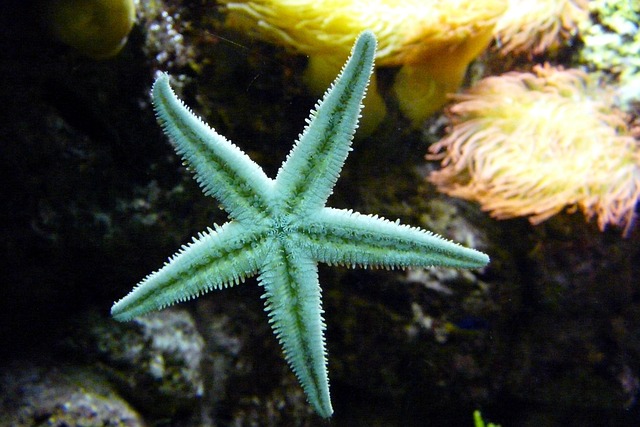Advanced life support systems revolutionize aquarium attractions by mimicking natural aquatic conditions. These systems include precise temperature control, high-efficiency filtration for crystal clear water, and oxygenation, fostering vibrant coral reefs and bustling fish schools. Modern technology, with real-time data analysis, ensures optimal ecological balance and visual appeal, aligning with sustainable design principles to create visually stunning and ecologically responsible aquarium attractions.
“Unleash the beauty and complexity of underwater worlds with state-of-the-art life support and filtration systems. This comprehensive guide explores the core components that sustain vibrant, healthy aquariums—from understanding foundational principles to embracing advanced techniques like innovative filtration methods. We delve into the transformative role of modern technology, offering insights on optimizing ecosystem balance. Additionally, discover expert strategies for designing and maintaining captivating aquarium attractions that captivate and educate.”
Understanding the Basics of Life Support Systems in Aquariums
Life support systems in aquariums are designed to replicate and maintain the natural conditions needed for aquatic life to thrive, just like their counterparts in vast oceans and rivers. These intricate systems encompass a range of components, including filtration, temperature control, water circulation, and oxygenation. Understanding these fundamentals is key to creating and maintaining thriving aquarium attractions.
Filtration, for instance, plays a vital role in removing organic waste, excess nutrients, and other pollutants, ensuring water quality. Advanced filtration systems employ mechanical, biological, and chemical processes to mimic nature’s own methods of purification. Temperature control mechanisms, often employing heaters or chillers, maintain the suitable thermal conditions required by different aquatic species. Efficient circulation pumps distribute oxygenated water throughout the aquarium, while also facilitating the movement of beneficial bacteria in filter systems.
Advanced Filtration Techniques for Optimal Aquarium Health
Advanced filtration systems play a pivotal role in maintaining optimal health for aquariums, enhancing their longevity and beauty as captivating aquarium attractions. These sophisticated mechanisms employ cutting-edge techniques to purify water, ensuring it remains crystal clear and teeming with life. One such innovation is the integration of high-efficiency particulate filters (HEPF) that trap even the smallest particles, from tiny dust grains to organic matter, preventing them from clouding the water or providing breeding grounds for harmful bacteria.
Additionally, advanced filtration involves the utilization of activated carbon filters, which effectively remove chemical and biological contaminants. These filters work by adsorbing pollutants onto their surface, ensuring that only clean, pure water circulates within the aquarium. This dual approach of mechanical and chemical filtration creates a robust defense system, safeguarding the aquatic ecosystem from potential dangers and contributing to a thriving environment that captivates viewers with its vibrant aquarium attractions.
The Role of Modern Technology in Enhancing Aquarium Ecosystems
Modern technology plays a pivotal role in enhancing the ecological balance and visual allure of aquarium attractions. Advanced life support systems, equipped with cutting-edge sensors and automated controls, monitor and maintain water quality with precision. These systems efficiently regulate parameters such as pH levels, temperature, and oxygen content, ensuring optimal conditions for aquatic life. Moreover, state-of-the-art filtration systems employ innovative techniques like mechanical, biological, and chemical filters to remove impurities, promote clear waters, and support diverse marine ecosystems.
The integration of these technologies not only sustains the health of aquarium inhabitants but also creates dynamic and visually captivating environments. Real-time data analysis enables aquariums to display intricate underwater landscapes, from vibrant coral reefs to bustling schools of fish, showcasing the beauty and complexity of aquatic habitats to captivated audiences.
Designing and Maintaining State-of-the-Art Aquarium Attractions
Designing and maintaining state-of-the-art aquarium attractions requires a delicate balance between aesthetics, ecological preservation, and cutting-edge technology. To create immersive experiences for visitors, aquariums must integrate advanced life support systems capable of sustaining diverse marine ecosystems. This involves meticulous planning to ensure optimal water quality, temperature regulation, and filtration methods that mimic natural environments. By employing innovative oxygenation techniques, automated monitoring systems, and high-efficiency filters, aquariums can maintain complex habitats, fostering the health and longevity of their exhibits.
Moreover, sustainable design principles play a pivotal role in modern aquarium attractions. Efficient energy management, water recycling systems, and eco-friendly materials contribute to reduced environmental impact. These measures not only ensure the well-being of aquatic creatures but also align with growing public awareness about conservation, making state-of-the-art aquariums both visually stunning and ecologically responsible.
State-of-the-art life support and filtration systems are transforming the way we create and maintain aquarium attractions. By leveraging advanced technologies, such as innovative filtration techniques and modern control systems, aquariums can now sustain healthier ecosystems while offering visitors a more immersive experience. Understanding these basic principles and staying updated on the latest developments is key to designing and maintaining captivating underwater worlds that both educate and inspire.
